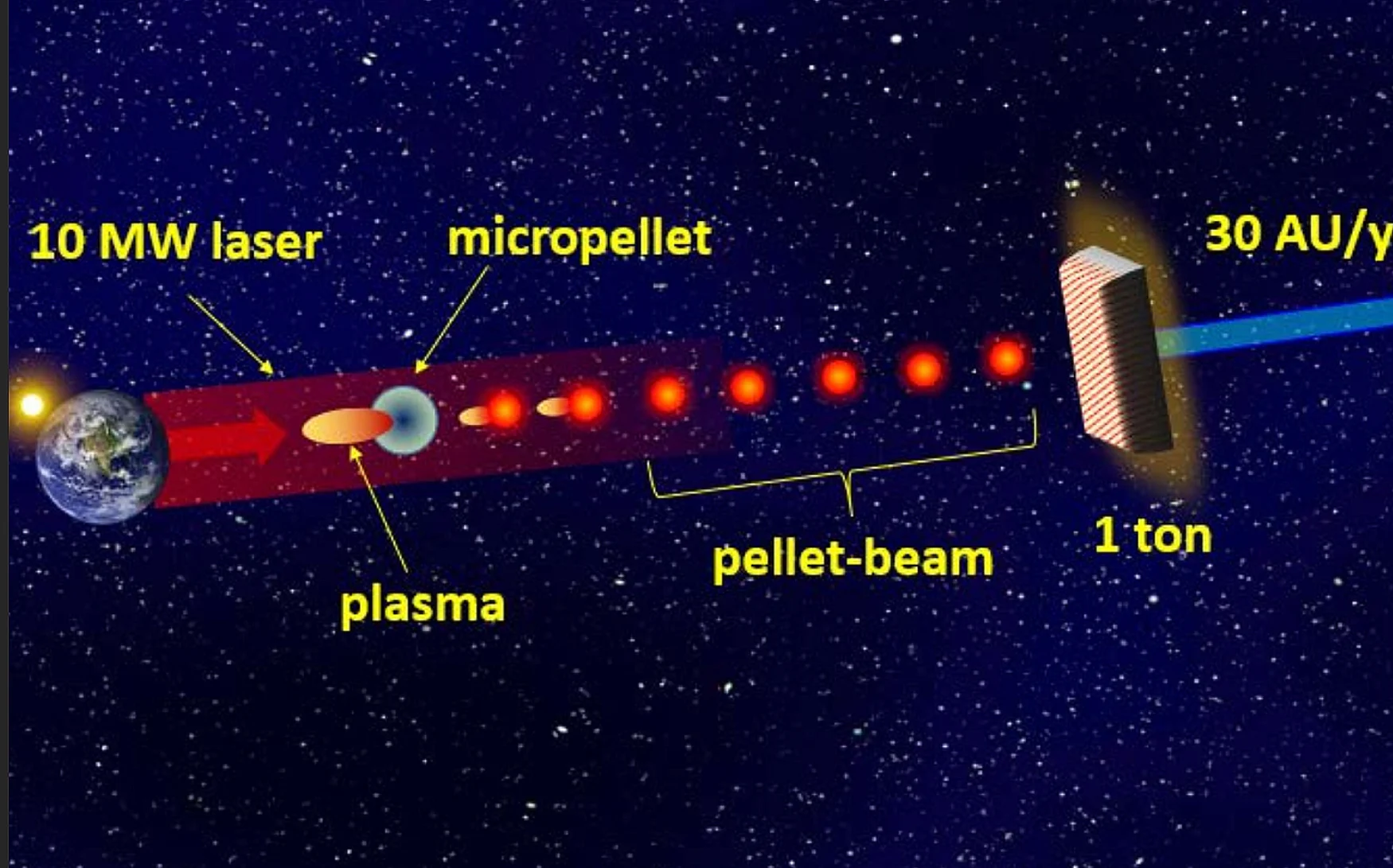[ad_1]
NASA is still ready to money uncommon principles in its quote to development area expedition. The firm is handing out $175,000 first research gives to 14 jobs that can be valuable for objectives in and also past the Solar System. The emphasize might be TitanAir, a seaplane from Planet Enterprises’ Quinn Morley that can both fly with the nitrogen-and-methane environment of Saturn’s moon Titan and also cruise its seas. The “flying watercraft” would certainly accumulate methane and also complicated natural product for research by drawing it in with a permeable cutting edge.
A job from UCLA’s Artur Davoyan, on the other hand, can accelerate objectives to the external side of the Solar System and also also interstellar area. His design (revealed at center) would certainly drive spacecraft by creating a “pellet-beam” of tiny fragments taking a trip at extremely broadband (over 74 miles per secondly) utilizing laser blasts. The idea can drastically reduce the moment it requires to discover deep area. Where Voyager 1 took 35 years to get to interstellar area (the heliopause, approximately 123AU from the Sun), a one-ton spacecraft can get to 100AU in simply 3 years. It can take a trip 500AU in 15 years.

Artur Davoyan
Other initiatives are often likewise enthusiastic. MIT’s Mary Knapp has proposed a deep area observatory that would certainly utilize a throng of countless small satellites to identify low-frequency radio discharges from the very early cosmos, and also the electromagnetic fields of Earth-like exoplanets. Congrui Jin from the University of Nebraska in Lincoln has envisioned self-growing environment foundation that can conserve area on objectives to Mars, while Lunar Resources’ Peter Curreri has devised pipes that can shuttle bus oxygen in between Moon bases.
These are all extremely early campaigns that aren’t ensured to cause real-world examinations, not to mention objectives. They show NASA’s reasoning. The management is moneying the jobs currently in hopes that a minimum of one will at some point repay. If there’s also partial success, NASA can make explorations that aren’t sensible utilizing existing modern technology.
All items suggested by Engadget are picked by our content group, independent of our moms and dad firm. Several of our tales consist of associate web links. We might make an associate compensation if you acquire something with one of these web links. All costs are appropriate at the time of posting.
.



